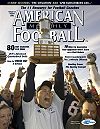AMERICAN FOOTBALL MONTHLY THE #1 RESOURCE FOR FOOTBALL COACHES
Article CategoriesAFM Magazine
|
AFM Subscribers Ask... Texas Techby: AFM Editorial Staff© More from this issue Premiering with this issue American Football Monthly begins ‘AFM Subscribers Ask…’, an in-depth Q & A session with a different coach each month. Subscribers are asked to send in their inquiries with specific questions for the coach featured that month. Our first coach to answer your responses is Texas Tech’s Mike Leach. One of the top offensive minds in the game today, Leach begins his seventh season in Lubbock this fall. A BYU graduate with a law degree from Pepperdine, Leach began his coaching career in 1987. Q. If you could have just two pass plays for the 3rd and 5-7 yard situation, what would they be? Jeff Shutter, Head Co....The full article can only be seen by subscribers. Subscribe today!
|
|
|||||||
| HOME |
MAGAZINE |
SUBSCRIBE | ONLINE COLUMNISTS | COACHING VIDEOS |
Copyright 2025, AmericanFootballMonthly.com
All Rights Reserved





